Engaging Science Experiments for Kindergarteners at Home
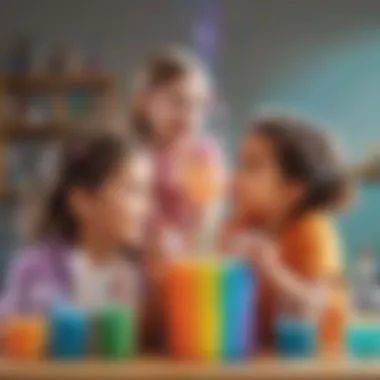
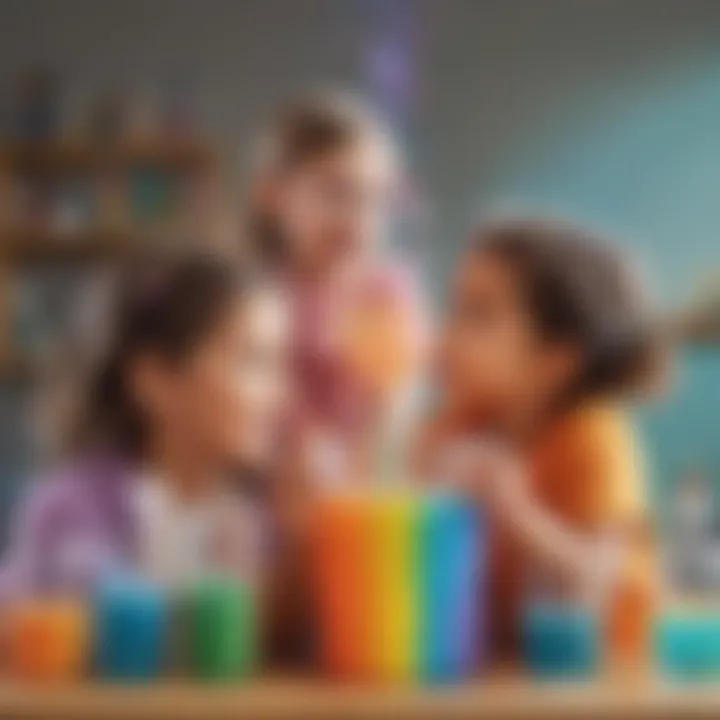
Intro
Engaging young minds in the mysteries of science doesn’t have to be a complex affair, especially within the cozy confines of home. Science experiments for kindergarteners are not just mere activities; they offer an invaluable opportunity for children to explore, ask questions, and develop an early sense of curiosity. This article aims to enrich the learning experience of little ones through simple yet effective experiments that can be done with materials commonly found around the house. By initiating these hands-on experiments, both parents and caregivers can play a key role in fostering an enthusiasm for science from an early age.
Creative Activities
When it comes to igniting curiosity, integrating creative activities into science experiments not only entertains children but also serves as a learning mechanism. Here are various engaging craft ideas that can easily be replicated by young hands.
Craft Ideas
- Colorful Volcanoes: Using baking soda and vinegar, kids can create mini volcanoes. The fizzing action naturally captures attention. Just throw in a bit of food coloring to mimic lava.
- Rainbow in a Jar: By layering sugar water solutions of different concentrations, children will observe a vibrant rainbow. It's a fun way to learn about density!
- Wind-Powered Cars: Have kids decorate their own toy cars from recycled materials and then use a fan to test which car best catches the wind.
Step-by-Step Guides
- Colorful Volcanoes: Place a small cup inside a plate. Fill the cup with baking soda. Pour in some vinegar, and watch the explosion! Kids can experiment with different amounts and colors.
- Rainbow in a Jar: Mix sugar with varying amounts of water and food coloring to create distinct layers. Pour slowly to prevent mixing.
- Wind-Powered Cars: Craft cars from cardboard and wheels. Place them in front of a fan and measure how far they go.
Educational Value
These experiments promote more than just entertainment; they promote critical thinking and problem-solving skills. By experimenting with various materials and methods, children can see firsthand the results of their actions. Each project allows for open-ended questions, paving the way for deeper understanding.
Learning Through Play
Perhaps one of the most important aspects of engaging kids in science is the simplicity of the lessons they learn through play. Simple experiments teach foundational skills necessary for understanding the more complex aspects of science later in life. Hence, these activities effectively serve as stepping stones, reinforcing what they learn in school while also introducing new concepts.
"Children learn more when they have their hands deep in curiosity."
In summary, simple projects like these hold the potent ability to kickstart a lifelong interest in science. Through accessible materials, children get to experiment and learn in a lively, interactive environment. So gather your supplies and let the exploration begin!
Prolusion to Home-Based Science Experiments
When it comes to engaging a young mind, science experiments at home can serve as a powerful tool. Not just a means of entertainment, these experiments equip children with vital skills. In a time where technology often captures attention, hands-on activities like these can make a significant difference. It gives children the chance to get involved in the process, rather than being passive recipients of information.
Conducting science experiments bolsters a child's understanding of the world around them. It's a proven way to spark curiosity. For instance, asking simple questions like, "What happens when I mix these two substances?" can lead to exploration and discovery. The beauty of home-based experiments is that they often rely on everyday items found in the kitchen or backyard.
In terms of ease, it's a win-win situation. As a parent or caregiver, these activities don't often require complex setups or expensive materials. Take, for example, the traditional baking soda and vinegar reaction. Both ingredients are household staples. With those in hand, a volcano becomes not just a model of geology but also a fun and educational project.
"Science is everywhere; it just takes a little curiosity to discover how things work!"
Moreover, integrating experiments into daily life nurtures critical thinking. Children learn to make hypotheses, test them, and observe outcomes. This practice lays the groundwork for scientific reasoning. They see not just results but also the process behind them. It’s about the journey of learning, rather than just arriving at an answer.
It's clear that introducing science experiments at home fosters not only knowledge but also an appreciation for discovery. As we navigate through the benefits of these hands-on activities, it's essential to focus on their role in shaping critical life skills that can benefit children throughout their education journey and beyond.
Benefits of Conducting Science Experiments at Home
Engaging children in science experiments at home is not simply an amusing activity; it's an educational journey that cultivates an array of essential skills critical to their development. Doing such experiments integrates play with learning, and home becomes a laboratory where curiosity thrives. Here, we will explore three major benefits: encouraging critical thinking, fostering a sense of curiosity, and building early foundations in STEM (Science, Technology, Engineering, and Mathematics). Each of these elements contributes to a child’s growth in significant and impactful ways.
Encouraging Critical Thinking Skills
When kids partake in hands-on science experiments, they are not merely following instructions— they are engaging their minds. They learn to ask questions like "What will happen if I mix these two liquids?" or "Why does this object fall faster?" This raises the bar on their cognitive abilities, boosting reasoning skills. Encouraging them to hypothesize and predict outcomes nurtures a mindset that values inquiry.
Moreover, as children encounter unexpected results, they learn to analyze and modify their approach. This process is akin to solving a jigsaw puzzle: they must think critically to find the right pieces that fit together. The ability to assess and adapt is a skill that serves them well beyond the science realm, impacting everyday decision-making.
Fostering a Sense of Curiosity
Curiosity motivates children to explore the world around them. Engaging in simple experiments awakens a sense of wonder. For instance, when young ones mix vinegar and baking soda to create a fizzy eruption, it’s not just the excitement of the reaction that captivates them; it’s the spark of questioning that follows. “What else can I make fizz?” they might wonder.
Children who engage in scientific exploration develop a habit of questioning. They become mini-scientists, eager to uncover what lies beneath the surface. Rather than simply accepting information as it comes, they start to seek deeper insights, a behavior that lays the groundwork for lifelong learning.
Building Early STEM Foundations
In an age where STEM education is ever more critical, early involvement in scientific practices is vital. Activities that integrate basic principles of science not only familiarize children with subjects they will encounter in school but also help solidify their interest in these areas. Think of it as laying bricks for a strong future—each experiment builds a new layer of understanding.
Hands-on activities like observing plant growth or experimenting with insulators feed into a framework of knowledge. They learn basic concepts of biology, physics, and chemistry in a context they can grasp easily. All in all, these foundational experiences are pivotal for engaging with future academic challenges.
"The more we engage our kids in hands-on learning, the more they thrive in their educational journeys."
By conducting science experiments at home, we are not just filling time; we are molding innovative thinkers. When children feel comfortable asking questions and seeking answers, they are empowered. With each little experiment, they step one foot closer to becoming informed, curious adults. Consider the implications of such benefits—an educational revolution starts at home, one experiment at a time.
Essential Materials for Home Experiments
Engaging in science experiments at home requires a thoughtful selection of materials. Essential materials are crucial because they not only make the experiments feasible but also assure that they are safe and enjoyable for young learners. Proper materials can open a door to exploration, leading to diverse scientific inquiries. When selecting items, consider their accessibility, practicality, and safety. This ensures that parents and caregivers can easily facilitate engaging learning experiences without much hassle.
Common Household Items
Many everyday household items can be transformed into tools for scientific discovery. Using common items makes experiments accessible and relatable for children. Here’s a list of materials you might already have:
- Plastic cups – Great for measuring liquids.
- Egg cartons – Use them for sorting or as planting containers.
- Baking sheets – Perfect for creating a ‘science lab’ area.
- Spoons and forks – Good for mixing and measuring.
- Water – An essential for many experiments, from basic mixing to observing density.
These items not only serve their primary purpose but also spark creativity. When children see familiar objects being used in new ways, it piques their interest. For instance, why use just one egg carton when you can use two to see how they float differently in water? It gets their wheels turning about the possibilities.
Safety Considerations
Safety cannot be overstated when it comes to conducting experiments, especially with young children. Ensuring a safe environment sets a foundation for trust and success in learning. Here are key safety considerations:
- Adult Supervision: Always supervise children during experiments. Even simple activities can pose unforeseen risks.
- Proper Handling: Teach kids to treat materials, especially liquids or fragile items, with care.
- Avoid Harmful Substances: Stick to non-toxic, household materials. For example, vinegar and baking soda are safe whereas some cleaning products are not.
- First-Aid Preparedness: Keep basic first-aid supplies nearby, just in case. It’s better to be safe than sorry.
Always make a habit of discussing the importance of safety with kids before diving into any experiments. This conversation reinforces their awareness and responsibility.
These precautions foster a positive experimentation environment, allowing for learning and fun while minimizing risks. The right approach to safety encourages children to be curious without fear.
By integrating these essential materials and safety considerations into your home experiments, you cultivate an effective and enjoyable learning space. Parents and caregivers are better equipped to guide children through the fascinating world of science.
Simple Physics Experiments
Simple physics experiments offer an excellent gateway for kindergarteners to explore fundamental scientific concepts. These activities not only spark curiosity but also help young learners develop an understanding of basic principles like gravity, balance, and force. By engaging with the world around them, children begin to grasp the essential components of the physical universe.
In the home setting, these experiments can be performed with everyday items, promoting not just learning but also creativity and resourcefulness. They lay down the foundations for critical thinking, problem-solving, and inquiry-based learning. Engaging with physics can inspire a sense of wonder about how things work, setting the stage for future scientific endeavors.
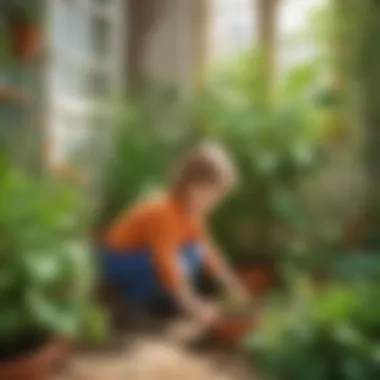
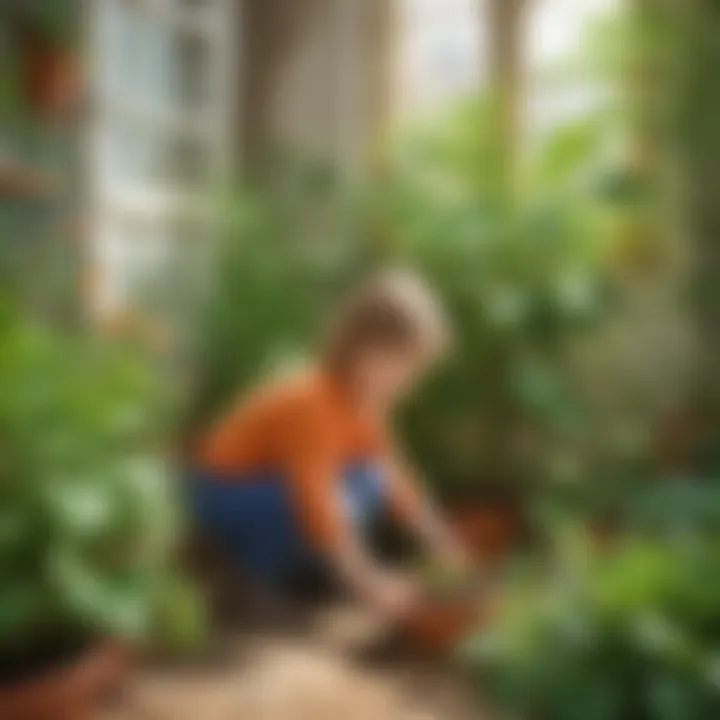
Building a Simple Balance Scale
Creating a balance scale at home is a fun and interactive way to introduce young children to the concept of weight and balance. You only need a few materials to get started:
- Two plastic cups or bowls
- A sturdy ruler or a stick
- A hanger or string to suspend the scale
- Weights such as small toys, stones, or even fruits
Instructions:
- Use the string to hang the ruler or stick from a chair or table edge. Make sure it sits horizontally.
- Attach one cup on each end of the ruler.
- Ask your child to place objects in the cups and observe which side tilts.
This hands-on experience allows them to visualize balance and weight. When one side is heavier, they can see the principles of equilibrium in action. Talk with them about why the heavier object causes the scale to tip, fostering a dialogue around cause and effect.
Exploring Gravity with Falling Objects
The concept of gravity can be both captivating and simple for children to understand through an experiment involving falling objects. This activity demystifies how gravity pulls everything towards Earth.
- Materials Needed:
- Two objects of different weight (like a tennis ball and a book)
- An open space for dropping the objects safely
Instructions:
- Stand at a safe height—this could be a chair or a staircase—ensuring your child is at a safe distance to observe.
- Hold the objects at the same height and let them go at the same time.
Observation:
- Ask your child which object hits the ground first.
- Discuss how both objects fall at the same rate, regardless of their weight, and why this concept is essential in understanding physics.
Through these straightforward experiments, children can witness physics at play, igniting their interest in concepts that govern our lives. It’s a hands-on approach that feels like playtime, while actually laying down crucial scientific groundwork.
Engaging with Chemical Reactions
Understanding chemical reactions offers kids a glimpse into the world of science where things transform right before their eyes. For young learners, this topic is not just about mixing ingredients but about observing changes and asking questions. By engaging with chemical reactions such as the classic vinegar and baking soda volcano, children learn valuable lessons about cause and effect, while nurturing a healthy curiosity about their surroundings. These experiments can ignite a passion for science by revealing how different substances interact, thereby laying an essential groundwork for future explorations in chemistry and beyond.
Vinegar and Baking Soda Volcano
This experiment is often considered a rite of passage for budding scientists. To set the stage, gather a few common materials: baking soda, vinegar, a small container, and food coloring for added flair. Here’s how to do it:
- Prepare the Volcano: Use a cup or small container, and place it on a plate to catch any overflow.
- Add Baking Soda: Fill the container about halfway with baking soda.
- Color the Vinegar: Next, add a few drops of food coloring to the vinegar. This is optional but makes the eruption visually exciting.
- Combine Ingredients: Slowly pour the vinegar into the container with baking soda and watch the reaction take place!
This reaction produces carbon dioxide gas, creating the fizzing and bubbling effect that mimics a volcanic eruption. More importantly, this is a great way for young minds to relate learning to real-life phenomena. They may wonder:
- What did the vinegar do to the baking soda?
- Why did it fizzle?
These questions encourage kids to think critically and start to form a scientific mindset.
"Science is not about memorizing facts but about observing changes and asking the right questions."
Milk and Food Coloring Experiment
Another fascinating project combines milk, food coloring, and dish soap, revealing the hidden beauty of molecules. This experiment demonstrates how different substances interact, creating a visual spectacle that fascinates both kids and adults alike. Here’s how to execute the experiment:
- Set Up: Pour some milk into a shallow dish until it's about half full.
- Add Food Coloring: Drop several different colors of food coloring onto the milk's surface in various spots.
- Introduce Soap: Dip a cotton swab into dish soap and touch it to the surface of the milk.
Watch as colors swirl and dance, illustrating how soap interacts with the fat molecules in milk. This reaction reveals the dynamic nature of chemical interactions in a simple, visually appealing manner. Children can be prompted to discuss:
- Why did the colors move?
- What happens when you add more soap?
These kinds of reflections help them build a foundation in the scientific method, encouraging their natural inquisitiveness as they observe, hypothesize, and discuss their findings.
Engaging with these experiments not only makes science fun but also serves as a stepping stone for understanding more complex principles in the future. The thrill of discovery, paired with hands-on experience, fosters a lasting appreciation for science in the minds of young learners.
Biological Experiments to Explore Life Sciences
Exploring life sciences through biological experiments is a fun way for kindergarteners to connect with the natural world. These experiments nurture kids’ curiosity about plant and animal life while promoting keen observation skills. Engaging in biological experiments encourages little ones to ask questions, making learning a two-way street where they actively participate rather than just soaking up information. Not only do these activities enhance scientific understanding, but they also contribute to overall cognitive development. As they watch beans sprout or observe insects, children learn patience and the importance of caring for living things while discovering the intricate relationships within ecosystems.
Growing Bean Sprouts in a Jar
Growing bean sprouts in a jar is a simple yet fascinating project that highlights the miracle of plant growth. This activity provides hands-on experience to see the whole lifecycle of a plant from seed to sprout. Here’s how to get started:
- Materials Needed:
- Steps:
- A jar (clear is best for visibility)
- Dried beans (like mung beans or kidney beans)
- Water
- A piece of cheesecloth or paper towel
- Begin by rinsing a small handful of dried beans.
- Soak the beans in a jar with water overnight. This softens the seeds and kick-starts their growth.
- The next day, drain out the water and insert the cheesecloth at the top of the jar, holding it in place with the jar lid or an elastic band.
- Rinse the beans with water twice a day, ensuring they stay moist but not soaked.
- In a few days, little sprouts will start to appear. Encourage children to observe the changes and keep a journal of their findings.
Watching the beans germinate and grow is a delightful way to teach children about life cycles, photosynthesis, and even basic botany terminology, like "germination" and "roots". Simple questions such as "What does a seed need to grow?" encourage critical thinking and deepen their understanding of plant life.
Observing Local Insects
Another excellent biological experiment is observing local insects. This activity transforms children into little entomologists, helping them develop observational skills while appreciating biodiversity. Here’s how you can conduct this engaging activity:
- Materials Needed:
- Steps:
- A magnifying glass
- A notebook or sheets of paper for notes
- Crayons or colored pencils
- Venture outside to your garden, park, or any green space. Let the kids explore and observe their surroundings.
- Encourage them to look under leaves, rocks, or in the grass to find insects. What kinds can they spot? Ants, beetles, butterflies?
- Using the magnifying glass, allow the children to examine the insects closely. Ask them to note down what they see.
- Have them draw pictures of the insects and describe their colors, sizes, and any unique features.
This not only sharpens their observational skills but also sparks curiosity about ecosystems and the role insects play. Ask questions like "Why do we think spiders build webs?" or "What do ants do in their colony?" to promote conversation and exploration.
Observing nature is fundamental for young minds. It ignites a quest for knowledge that can last a lifetime.
By engaging in these biological experiments, kindergarteners will experience the joy of discovery and deepen their appreciation for the life sciences. These activities are not only educational but are also a great way to bond with children, making science a shared adventure.
Earth Science Activities
Understanding Earth science is like peeking under the hood of our planet and discovering what makes it tick. With the right activities, even young kids can start to grasp the wonders of the Earth. Engaging in Earth science activities at home provides a great way to teach them about things like soil composition, rocks, weather, and natural processes that shape our environment. Not only do these activities foster an appreciation for nature, they also build foundational scientific knowledge that children can grow upon as they advance in their learning journey.
Creating a Miniature Volcano
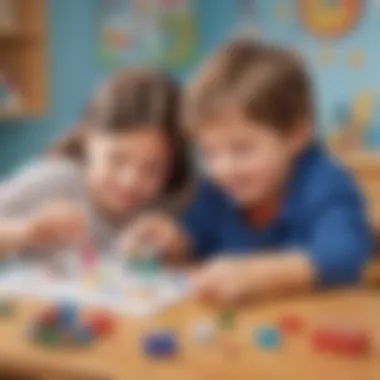
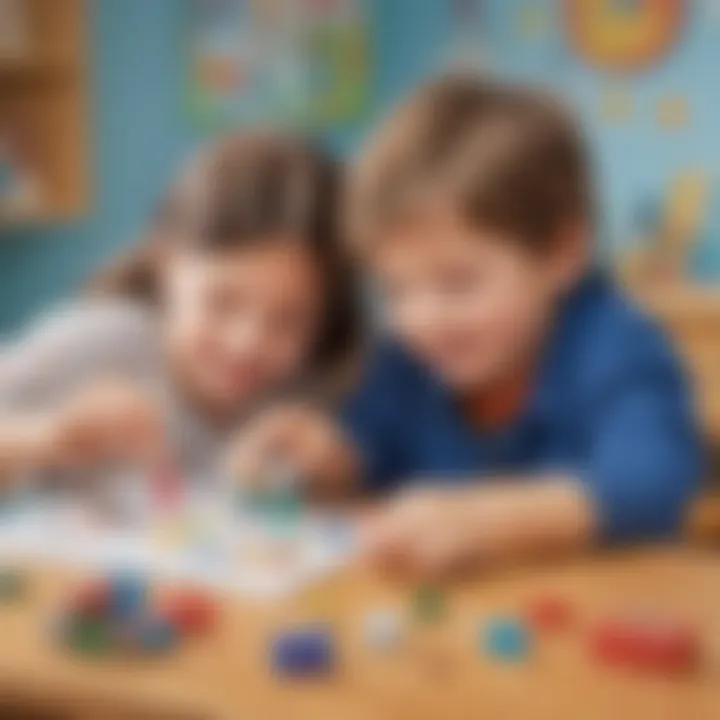
Creating a miniature volcano is not only a fun activity but it’s also an excellent way to demonstrate how eruptions work on a basic level. It teaches young kids about how some landforms are created, making it both educational and adventurous.
Here’s what you’ll need for this volcano project:
- A small plastic or clay bottle
- Baking soda
- Vinegar
- Dish soap
- Food coloring (optional)
- Tray to contain the mess
- Small rocks or soil to shape the volcano
Steps to follow:
- Place the bottle upright in the center of the tray. This will act as your volcano’s core.
- Using clay or soil, build up a mound around the bottle to shape your volcano. Make it as tall and rugged as you’d like.
- Pour a few tablespoons of baking soda into the bottle. If you want colorful lava, add a few drops of food coloring.
- In a separate bowl, mix some vinegar with a little dish soap.
- Pour the mixture into the bottle while standing back and watching the eruption happen!
"Watch how the reaction creates bubbling lava that flows down. This demonstrates chemical reactions and can lead to more discussions about real volcanoes!"
Exploring Soil Layers
Soil is the skin of the Earth, full of life and stories waiting to be told! This activity encourages children to dig in, quite literally, to learn about the different layers of soil and the critters that live within it. It’s crucial for kids to connect with the environment around them, and examining soil helps them see how our ecosystems operate.
Materials you will need:
- A clear container or jar
- Different types of soil (topsoil, clay, sand, etc.)
- A small shovel or spoon
- Water (optional)
Steps to conduct the activity:
- Collect some soil from various locations such as your garden or a nearby park.
- Take your clear container and start layering different types of soil inside, one at a time. This can show how the soil varies and helps kids visualize the different strata in the Earth.
- You can sprinkle a bit of water on top to see how the water percolates down through the different layers.
- Encourage the kids to poke around in the soil to find small bugs or roots. Discuss what each layer might contribute to plant life above.
This activity drives home the importance of soil conservation and the role of soil in our ecosystem. By integrating both activities, kids will gain a deeper understanding of Earth science principles while finding joy in nature!
Key Takeaways:
- Earth science activities promote curiosity about our planet.
- Hands-on activities like these can make learning memorable and approachable for young minds.
- By exploring Earth science, children learn valuable lessons about the environment that can last a lifetime.
Weather and Atmospheric Science Projects
Exploring weather and atmospheric science projects can be an enlightening journey for young minds. Understanding the weather is crucial not just for safety, but also for fostering a sense of wonder about the natural world. These experiments allow kindergarteners to observe the climatic conditions that affect their surroundings and learn about the science behind them. Through simple activities, children can relate daily weather changes to scientific concepts, making learning engaging and enjoyable.
Moreover, weather-related experiments encourage outdoor exploration, which is essential for healthy development. Being outside allows kids to directly observe the sky, the ground, and the elements like wind and rain. This hands-on interaction helps to solidify their understanding of how various conditions impact their daily lives. So let’s dive into two delightful projects that bring the weather to life.
Making a Weather Station
Creating a weather station is a fun and educational project for kids. This activity involves setting up simple tools to track weather patterns, encouraging them to become little meteorologists. Here’s how you can set it up:
- Materials Needed:
- Setting Up the Station:
- Tracking the Weather:
- A large piece of cardboard or a wooden board
- Plastic cups or jars (for collecting rain)
- A thermometer (can be a simple one for kids)
- A compass (optional)
- Markers, stickers, or paint for decoration
- Use the cardboard or wooden board as the base for your station.
- Securely place the cups on the board for rain collection and label them.
- Attach the thermometer to the board so that it’s visible.
- Consider adding a compass for fun! Kids can learn about North, South, East, and West.
- Encourage the children to check the thermometer every day at the same time to record the temperature.
- Measure any rainfall collected in the cups after a rainy day. They can learn to measure in milliliters or ounces, depending on the measurement system used.
- They can even draw pictures or take notes on the day’s weather.
This project not only teaches about temperature and precipitation but also about consistency and responsibility, as they’ll be involved in daily observations.
Creating a Rain Gauge
A rain gauge is a straightforward but effective tool for measuring rainfall, making it a perfect project for kindergarteners. It gives them insight into how much rain a particular storm delivers, fostering a better understanding of weather patterns.
- Materials Needed:
- Instructions for Building a Rain Gauge:
- Using the Rain Gauge:
- A clear plastic bottle (1-2 liters)
- A ruler
- Permanent marker (to mark measurements)
- Scissors
- Small stones or sand for stabilization
- Cut the plastic bottle in half horizontally. Keep the top half for the rain gauge.
- Flip the top half upside down and place it into the bottom half. This will funnel the rain into the bottle.
- Use the ruler and marker to mark measurements in centimeters on the side of the bottle.
- Add small stones or sand to the bottom half to ensure it doesn’t tip over in wind.
- Place the rain gauge outside in an open area where it won't be under trees or eaves that might block rain.
- After a rainfall, have the children measure how much water is collected and record their observations.
- Compare the data over several days or weeks to see variations.
By constructing something as simple as a rain gauge, children can visually connect weather changes to real-world data, reinforcing their understanding of the environment and sparking an interest in science.
"Weather doesn't just happen; it affects the world around us every day. Learning about it opens windows to understanding our planet."
Engaging kids in these weather projects not only enriches their learning but also makes science a fascinating subject in their everyday lives.
Integrating Art with Science
Bringing together art and science in a home setting is an engaging way to introduce young learners to the world around them. This integration is more than just a fusion of creativity and scientific thought; it emphasizes the notion that these subjects can complement and enhance each other. As kindergarteners experiment with colors and textures, they begin to develop essential observational and analytical skills. By merging artistic expression with scientific methods, children not only explore the principles of each discipline but also understand their interconnectedness.
Benefits of Integrating Art with Science
- Enhanced Creativity: Combining artistic and scientific exploration fosters creative thinking in children. They learn to approach problems in innovative ways, seeing beyond the obvious solutions.
- Improved Engagement: Activities that involve both art and science can captivate young minds. For example, mixing colors is not only fun but also provides a way to discuss mixing substances in chemistry.
- Encouragement of Expression: Art allows children to express what they observe in science experiments visually. This expression can deepen their understanding of concepts while offering a personal reflection of their learning journey.
Throughout this article, the scientific experiments highlighted will also include an artistic component, allowing children to see the joy in both disciplines. Let's explore some delightful activities that seamlessly integrate these two fields.
Color Mixing with Water
What if you could create a rainbow right in your living room? This experiment does just that and allows kids to dive into the colorful world of mixing!
Materials Needed:
- Clear cups (3 or more)
- Water
- Red, blue, and yellow food coloring
- A paper towel
Steps:
- Fill each cup about halfway with water.
- In the first cup, add a few drops of red food coloring.
- In the second cup, add a few drops of blue.
- In the last cup, keep it plain (this will be our mixing cup).
- Using the paper towel, create a bridge by connecting the cups. Each end should touch a cup filled with colored water.
- Sit back and watch as the colors travel through the paper towel, mixing and creating new hues in the empty cup!
Through this simple activity, children learn about primary and secondary colors while observing capillary action. They can even predict what colors will form and compare their results to their initial guesses.
Creating Textured Paintings with Natural Materials
There's something freeing about using nature to create art. This experiment empowers children to explore textures while thinking scientifically about the materials they use.
Materials Needed:
- Leaves, twigs, petals, and other natural items
- Non-toxic paint (various colors)
- Thick paper or canvas
- Brushes or sponges (optional)
Steps:
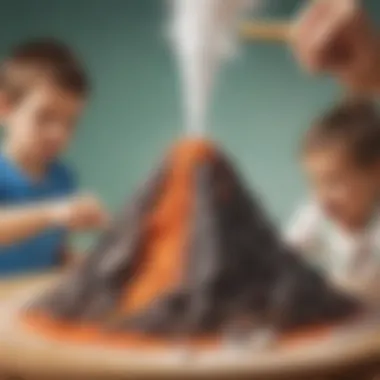
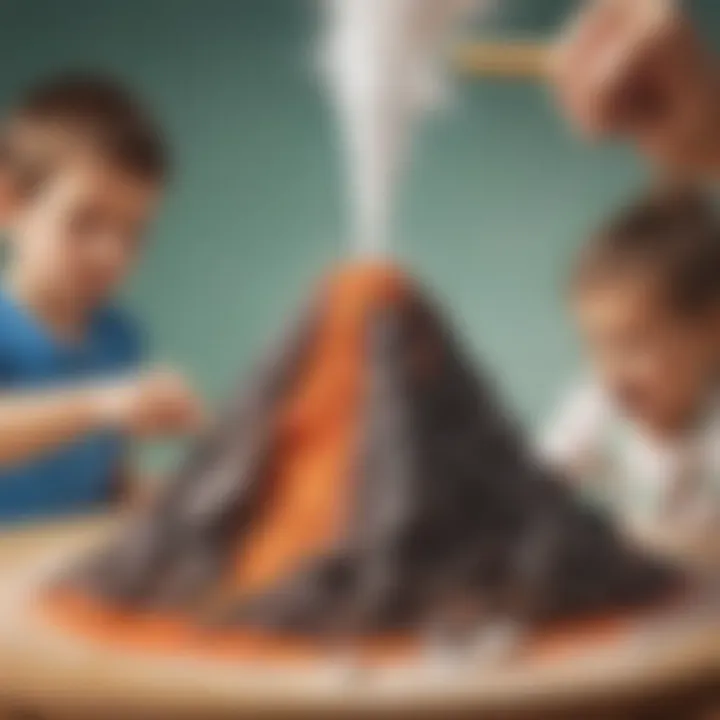
- Go on a nature walk to collect various textures. Discuss with children what textures they find interesting.
- Spread out your collection and let the kids choose their favorite items.
- Dip the natural materials in paint or use brushes to apply paint to the paper.
- Encourage the children to press, dab, or stamp the materials onto the paper to create their textured masterpiece!
- Once finished, discuss the different textures and colors they used, asking questions to guide their understanding, such as, "What happens when we combine this leaf with blue paint?"
This artistic exploration allows children to connect with their environment while understanding essential concepts about materials, techniques, and the science behind colors and textures.
Integrating art with science isn’t just about making something beautiful; it’s about making learning multifaceted and engaging.
As children participate in these activities, they grasp that learning can be fun, creative, and inspiring. The combinations of art and science not only encourage skills development but also instill a deeper appreciation for both disciplines.
Parent and Teacher Involvement
When it comes to the world of science experiments at home, the role of parents and teachers is pivotal. Their involvement not only ensures that children are safe during these experiments but also fosters an enriching environment where young minds can explore and grow. Collaboration between parents and teachers provides a robust support system that enhances the educational experience.
One significant benefit of involving parents in the learning process is the opportunity for hands-on participation. Children tend to engage more deeply in activities when they have an adult's attention and encouragement. It transforms learning into a shared experience, making science less daunting and more approachable for kindergarteners.
Moreover, the positive reinforcement from parents helps in establishing a sense of confidence. When kids see their parents actively participating, it signals to them that learning is important, valuable, and fun. This nurtures a positive attitude towards science and education in general.
In addition to hands-on involvement, teachers can guide parents on how to facilitate these experiments at home effectively. They can share resources, tips, or even specific experiments that align with what’s being covered in class. This connection helps create a seamless educational thread between school and home, benefiting the child's overall learning journey.
"The connection between home and school strengthens children's learning, setting the stage for lifelong curiosity and growth."
When educators suggest simple experiments, it provides parents with concrete ideas that they can replicate or adapt, making the experience easier and more enjoyable. Additionally, teachers can host workshops for parents to show them the ropes. Seeing demonstrations can considerably boost parents' confidence in conducting science activities, ensuring they're engaging their children in meaningful exploration.
Promoting Collaborative Learning
Collaborative learning is often the name of the game when it comes to fostering a rich educational environment. This not only applies to classrooms but also extends to home settings where parents guide their children through science experiments. Sharing this learning journey makes it a memorable experience. For instance, while creating a mini weather station, a parent and child might exchange ideas, discuss observations, and explore outcomes together.
This exchange leads to deeper understanding and analysis as they talk through results and seek clarifications. Asking questions together not only promotes dialogue but can also spark children's curiosity. For example, while observing a homemade volcano, a parent might ask, "What do you think will happen if we add more baking soda?" This simple question can open a floodgate of thoughts for the child, leading to further exploration and subsequent experiments.
Guiding Observation and Discussion
Incorporating observation within science experiments is crucial. Parents and teachers alike should encourage children to ask questions and articulate their thoughts. A well-guided discussion can help children process their observations in a constructive manner. Instead of simply completing an experiment and moving on, parents can enhance this experience by prompting reflection with questions.
Consider asking open-ended questions like, "What did you notice about the colors in the milk experiment?" This doesn’t just engage children; it helps them make connections between what they observe and what they understand. Children might articulate thoughts about diffusion if given the opportunity to reflect on their experiences. This not only helps them to capture the educational essence but also frames scientific thinking.
Additionally, parents and teachers can take notes during these discussions to document insights and predictions. This not only reinforces the importance of observation but can also be compiled into a fun science journal over time. Recording these moments enhances the narrative of exploration that children are thriving in while also providing a tangible reference they can look back on as they grow.
Documenting and Reflecting on Experiments
Observing and documenting scientific activities can be an integral part of the learning experience. For young children, the act of writing or illustrating what they see is not merely about recording. It’s a crucial element that promotes understanding and retention of scientific concepts. Documenting allows kindergarteners to revisit their ideas and thoughts, making science a lot more relatable.
Journaling Observations
When kids engage with their experiments, they often have a whirlpool of thoughts and curiosities running through their minds. Adding a journaling component simplifies this process; it also empowers children to clarify their ideas. They can jot down what they saw, draw their observations, or even dictate to a parent or teacher who can write it down for them.
- Key elements of journaling include:
- Date of the experiment: Helps in tracking progression over time.
- Description of the experiment: Provides context for what was done and the steps involved.
- Predictions and results: Encourages them to think critically. For instance, “I thought the balloon would pop, but it didn’t. Why?”
- Feelings: Reflecting on emotions during the experiment can be very enlightening as it connects feelings to learning.
By keeping a journal, children develop narrative skills while forming a bridge between imagination and observation.
Understanding Scientific Method Basics
Science isn’t just about laboratories or professionals in white coats; it’s something everyone can dabble in, even at home. At the core of scientific inquiry lies the scientific method. Teaching young children about this method in simple terms can offer them a systematic approach to exploring the world around them.
The basic steps, simplified for kindergarten, generally include:
- Ask a Question: What do you want to know?
- Make a Hypothesis: What do you think will happen?
- Conduct the Experiment: Make observations while following the procedure.
- Analyze the Data: What do the results tell you?
- Draw Conclusions: Does it match your hypothesis? Why or why not?
Understanding this process also helps children grasp a fundamental principle: that science is about exploration and learning from outcomes—all outcomes, whether they turn out as expected or take an unexpected twist.
"Documenting experiments helps transform fleeting moments of discovery into lasting memories of learning."
Having discussions about their methods and hypotheses cultivates a robust scientific mindset. Ultimately, these practices enrich the child’s learning experience and deepen their appreciation for the subject.
In summary, both documenting and reflecting on experiments not only solidifies learning but also nurtures a sense of accountability and curiosity in young scientists.
Resources for Further Exploration
In the realm of early childhood education, partaking in science experiments at home expands beyond mere hands-on activities. It lays down a pathway for further exploration. These resources act as guides, bringing parents and children together while fostering a rich learning environment. By diving into books and online platforms, families can sustain the momentum of curiosity and learning, reinforcing the concepts gleaned from experiments conducted.
Books for Young Scientists
Books can serve as a bridge to learning, opening up worlds filled with wonder and knowledge. They present information in an engaging manner, often tailored for young minds. When it comes to science, the right books can inspire kids to ask questions and ponder about the world around them. Here are some standout titles:
- "The Magic School Bus Explores the Senses" by Joanna Cole: This vibrant book takes kids on a journey through their senses, sparking dialogue about observation and perception.
- "How Do Dinosaurs Say Good Night?" by Jane Yolen: Blending science with storytelling, this book introduces kids to dinosaurs while reinforcing the idea of routines.
- "Ada Twist, Scientist" by Andrea Beaty: This inspiring tale revolves around a young girl whose insatiable curiosity leads her to many scientific questions, demonstrating that inquiry is essential for learning.
Getting books like these encourages not just reading but also sets the stage for discussions about experiments done at home, enriching the entire learning experience.
Online Platforms for Educational Science Programs
The digital age has made knowledge easily accessible. Online platforms cater to an array of learning styles and can provide interactive experiences that textbooks simply cannot. Websites and apps designed for young learners can offer videos, quizzes, and interactive activities that align perfectly with home-based experiments. Some noteworthy platforms are:
- PBS Kids: Offers resources that integrate fun with learning, perfect for expanding on the experiments kids do at home.
- National Geographic Kids: This site is rich with articles and videos that cover a wide variety of scientific topics, sure to capture the adventurous spirit of young scientists.
- Khan Academy Kids: A kid-friendly platform with a variety of subjects including science, perfect for supplementing home experiments.
By utilizing these resources, parents can guide their children towards more profound discoveries and solidify the knowledge gained through practical experiences.
Ending and Future Engagement
In wrapping up our journey through engaging science experiments for kindergarteners at home, it's vital to reflect on why this particular aspect of education holds significant value for young learners. At the core, the need for cultivating an inquisitive mind in children can't be overstated. Understanding basic scientific principles not only engages children but helps them shape their thoughts and perceptions about the world around them.
The Importance of Ongoing Engagement
- Sustained Curiosity: It's like watering a newly planted seed. The more you engage with children by asking questions and sparking curiosity, the deeper their interest grows. When they see the outcome of an experiment, their eyes light up, and that moment can lead to a lifetime of learning.
- Encouragement of Exploration: Each small experiment is a gateway to trying something new. Letting children explore on their own with parents as guiding hands can show them how delightful and rewarding science can be.
- Building Problem-Solving Skills: Problem-solving is an essential part of science, and home experiments offer a safe space to make mistakes and discover solutions cleverly. It teaches them resilience—if something doesn't go right, there's always a way to fix it.
Practical Considerations
When considering future engagement in science activities, there are a few practical aspects to keep in mind:
- Safety First: Always prioritize safety, ensuring that materials are child-friendly and experiments are closely monitored.
- Reflective Practices: Encouraging children to keep journals about their findings not only reinforces lessons learned but also contributes to the development of writing and communication skills.
- Diverse Activities: Introducing a mixture of scientific disciplines ensures children remain interested. Mixing biology, chemistry, physics, and earth sciences keeps them on their toes and broadens their scope of knowledge.
The Path Ahead
Looking ahead, fostering this experimental mindset can lead to wonderful discoveries for both children and their families. As they grow, this early initiation into scientific inquiry is likely to help them navigate an increasingly complex world, filled with technological advancements and new learning opportunities. So, as future engagements unfold, embrace every chance to experiment together—who knows what curious minds will discover next?
"Science is the word of wonder, and curiosity is the door."







